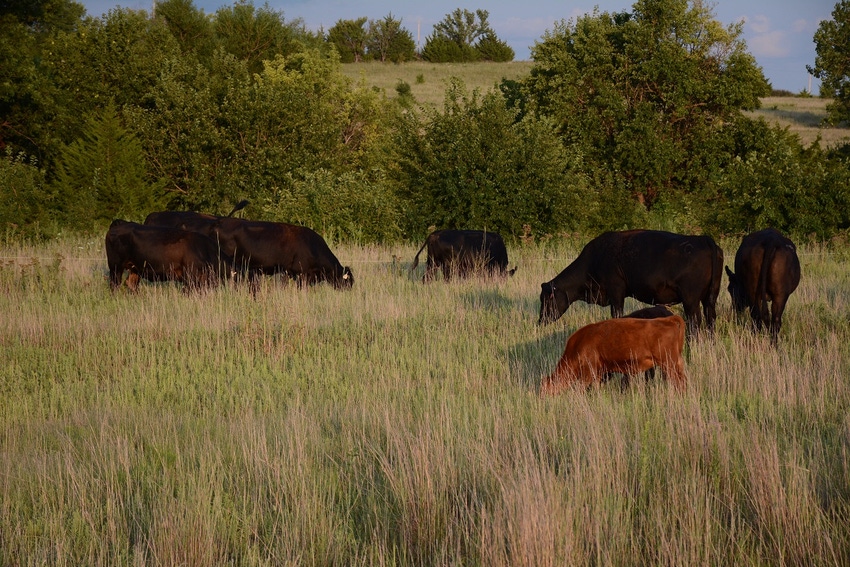
Since July 6 I've been trying to balance the highest possible stock density with the needs of a mixed herd of dry and wet cows and my refusal to spend the money and time it would cost to move the cows more than once per day.
All this is a first grazing on an old farm that has been continuously grazed for the last 60 years or more, so the condition of the forage is quite poor, with a heavy component of western ragweed, which cattle typically don't eat even under much heavier stock density than I'm achieving until October and November. There is also a lot of three-awn, some silver-beard bluestem and a smattering of more desirable plants in the rocky areas that were never plowed.
It's naturally a balancing act between trying to give the cows a reasonable cut of forage and adequate quality, while at the same time pressuring them enough to get good grazing on some of the plants they don't prefer. Incidentally, I'm doing all this with temporary electric fence.
The need for stock density is something I write about over and over because it's the fastest way to improve soil health and forage health, which is then followed by improvements in cattle health.
Every trip to the farm is about 15 miles round-trip, therefore it costs me about $8 via the allowed IRS mileage rate. Over 100 days, that's $800 or about the price of two Batt-Latches -- battery-controlled, timed electric-fence gate releases manufactured in Australia. To gain the savings, however, I'd need to go to the farm less, so would still not gain the added stock density which will speed up my land improvement.
Here's an example of how that technology would work. Let's say I buy one Batt-Latch for $400 and go to the farm every other day. Therefore over a period of 100 days, I would make 50 fewer trips and save the $400. Therefore in three months I would be able to double my stocking rate by going to the farm every day. Or I could repeat the Batt-Latch purchase process and keep making the trip every other day but also double my stock density half the time. At the end of another 100 days I would then have the ability to double my stocking rate completely while going every other day. After that I could keep up the process or change my plan.
In addition, I have tried and will try again a method to increase stock density described to me by R.P. Cooke: When you open a new section of temporary electric fence, therefore a new "paddock," instead of giving them the entire paddock, you will split it into two or three pieces, with those dividing fences running parallel with the paddock they are exiting. Therefore when you roll up your electric wire to let cattle into the new paddock they will only enter half or one-third of the paddock. You will spool out 10 or 15 more yards of these dividing fences back into the previous paddock to further confuse the animals as to the amount available. Cooke says if you do this late in the evening they may even spend the night in that first division before they go to water or to back-graze and discover they have additional forage available. We'll try this method again and either write more about it soon or get Cooke to do so.
Fortunately, I also have a third option. I'm going to be testing a homemade unit similar to a Batt-Latch and made by another grazier. He's been using and developing this on his ranch and is now sending out several for others to try and give him feedback. My understanding is he plans to either sell the units, or perhaps partial units, or possibly either kits or plans to make them yourself. I hope to be reporting on that soon.
In the meantime, if you have an automatic gate release for electric fences, homemade or otherwise, please let me know about it.
About the Author(s)
You May Also Like




